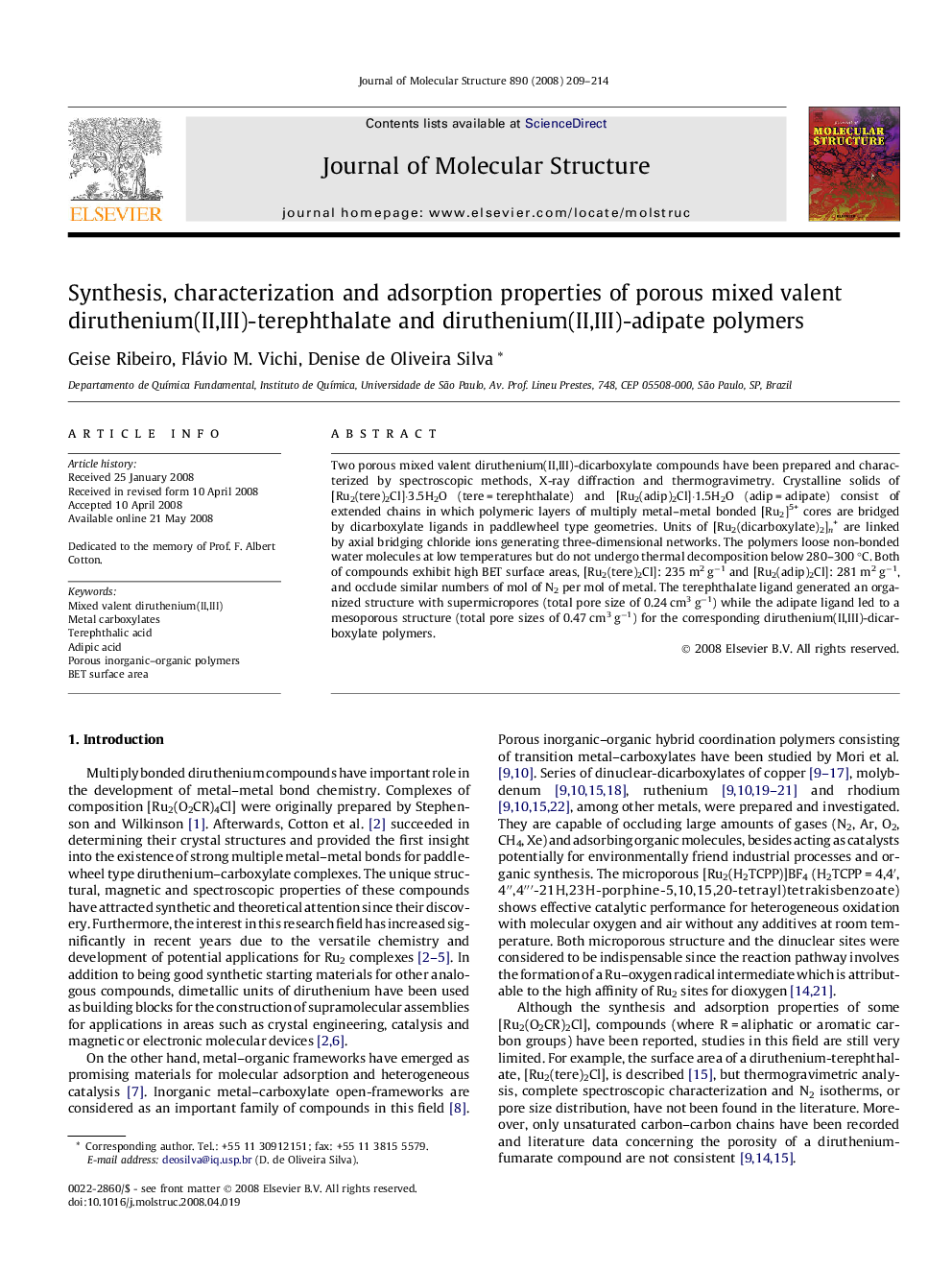| Article ID | Journal | Published Year | Pages | File Type |
|---|---|---|---|---|
| 1407193 | Journal of Molecular Structure | 2008 | 6 Pages |
Two porous mixed valent diruthenium(II,III)-dicarboxylate compounds have been prepared and characterized by spectroscopic methods, X-ray diffraction and thermogravimetry. Crystalline solids of [Ru2(tere)2Cl]·3.5H2O (tere = terephthalate) and [Ru2(adip)2Cl]·1.5H2O (adip = adipate) consist of extended chains in which polymeric layers of multiply metal–metal bonded [Ru2]5+ cores are bridged by dicarboxylate ligands in paddlewheel type geometries. Units of [Ru2(dicarboxylate)2]n+ are linked by axial bridging chloride ions generating three-dimensional networks. The polymers loose non-bonded water molecules at low temperatures but do not undergo thermal decomposition below 280–300 °C. Both of compounds exhibit high BET surface areas, [Ru2(tere)2Cl]: 235 m2 g−1 and [Ru2(adip)2Cl]: 281 m2 g−1, and occlude similar numbers of mol of N2 per mol of metal. The terephthalate ligand generated an organized structure with supermicropores (total pore size of 0.24 cm3 g−1) while the adipate ligand led to a mesoporous structure (total pore sizes of 0.47 cm3 g−1) for the corresponding diruthenium(II,III)-dicarboxylate polymers.
